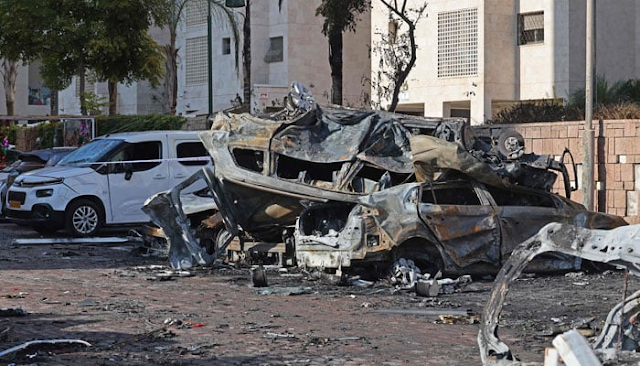Hamas Attack Kills 22 Israelis, Injures Over 500: Understanding the Conflic
In a tragic turn of events, Palestinian gunmen launched a heavy barrage of rockets from the Gaza Strip into various Israeli communities, resulting in the deaths of 22 Israelis and leaving more than 500 injured. The attack, claimed by the militant group Hamas, has once again escalated the long-standing conflict between Israel and Palestine. While some may view this as a retaliatory act, it is essential to examine the broader context surrounding this incident to gain a better understanding of the ongoing conflict.
The Escalation:
The recent escalation of violence stems from a series of events that have unfolded over several years. The Israeli-Palestinian conflict has deep historical roots, primarily revolving around issues such as land ownership, self-determination, and the status of Jerusalem. The situation has been further exacerbated by clashes, protests, and confrontations between the two sides.
Hamas, a Palestinian militant organization that controls the Gaza Strip, launched a barrage of rockets into various Israeli communities, including Jerusalem and Tel Aviv. These rockets, fired indiscriminately, posed a severe threat to the lives of Israeli civilians. The Israeli Defense Forces (IDF) responded with airstrikes on Gaza, targeting Hamas infrastructure and leadership.
Understanding the Context:
To truly understand this recent attack, it is essential to consider the historical and political context surrounding the Israeli-Palestinian conflict. The roots of the conflict date back to the late 19th and early 20th centuries when Jewish immigration to Palestine increased. The situation escalated with the creation of the State of Israel in 1948 and the displacement of Palestinian Arabs, leading to ongoing disputes over territory.
Over the years, numerous peace negotiations have taken place, but a lasting solution has proven elusive. The status of Jerusalem, the borders of a potential Palestinian state, and the right of return for Palestinian refugees are just a few of the contentious issues that have hindered progress.
Hamas, which emerged as a resistance group and later gained political control of Gaza, is considered a terrorist organization by Israel, the United States, and the European Union. It has been responsible for numerous rocket attacks and suicide bombings targeting Israeli civilians over the years. Hamas justifies its actions as resistance against Israeli occupation and policies.
International Response:
The international community has expressed deep concern over the recent escalation of violence. Several countries, including the United States, have called for an immediate ceasefire and a return to negotiations. The United Nations has also been actively engaged in mediating talks between the two parties.
It is crucial to emphasize the importance of a peaceful resolution to the Israeli-Palestinian conflict. The loss of innocent lives on both sides is a tragic consequence of the ongoing violence. While people may have differing opinions on the root causes and justifications for these actions, it is clear that the path to peace must involve diplomatic efforts, dialogue, and compromises from both sides.
The recent Hamas attack that killed 22 Israelis and injured over 500 is a tragic event in the ongoing Israeli-Palestinian conflict. To truly understand the situation, it is essential to consider the historical context, complex issues, and political dynamics that have contributed to the violence. The loss of innocent lives underscores the urgency of finding a peaceful resolution to this long-standing conflict. It is hoped that diplomatic efforts and international intervention will pave the way for a ceasefire and eventual negotiations that can lead to a lasting and just peace in the region.




Comments
Post a Comment